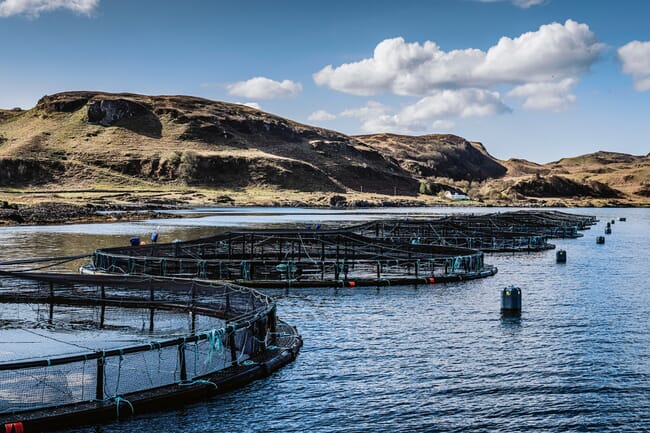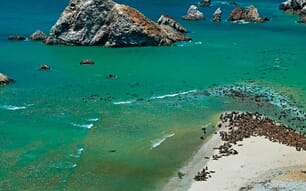
Researchers have created mathematical models that can help detect harmful algae blooms (HABs) along the Scottish coast © Scottish Sea Farms
Researchers at the Scottish Association for Marine Science (SAMS), Marine Scotland Science (MSS) and Scotland's Rural College (SRUC) have shared their own water sampling experience with the country's trout and salmon producers as part of a move to standardise and share water quality data – a key first step towards earlier detection of marine organisms that can affect fish health.
Delivered by the Sustainable Aquaculture Innovation Centre (SAIC) and funded by the Scottish Government, the cross-sector project was commissioned by the Scottish Farmed Fish Health Framework (FFHF); a key aim of which is to respond to new and developing challenges.
Oliver Robinson, chief executive of the British Trout Association, said: "Globally, changes in weather patterns are affecting all manner of animal and plant species. For aquaculture, this can mean increases in the presence of naturally occurring but potentially harmful plankton and jellyfish.
"Standardising protocols for water sampling and sharing this data cross-sector can only be a good thing, helping highlight emerging threats and enable producers to take pre-emptive action to protect their livestock."
A similar approach has already proven beneficial to Scotland's shellfish producers.
Professor Keith Davidson, associate director for science and education at SAMS said: "SAMS has operated an early warning system to mitigate the impacts of harmful algal blooms on shellfish. Now, we're working with SAIC and sector to refine this approach to support salmon aquaculture.
"We use phytoplankton cell counts undertaken at farms to initiate mathematical models that are able to simulate the development and transport of these potentially harmful events and help farmers plan husbandry actions to best protect the health of farmed fish."
Actions that farmers can take include:
- Drawing fish deeper down and away from the water's surface where many of these organisms can thrive
- Boosting oxygen levels
- Transferring fish elsewhere including, where appropriate, altering the harvest schedule.

Recent data shows that salmon survival fell to 95.3 percent; 2.4 percentage points down on the past four-year average of 97.7 percent © Scottish Sea Farms
Earlier warning of the nature, location and extent of marine organisms is proving increasingly critical. Just last week, a survey by the Marine Conservation Society reported an increase in the abundance of jellyfish types around the UK and Ireland, including species normally found in warmer waters.
Around Scotland's west coast and islands, microscopic jellyfish – tiny translucent jellyfish measuring as small as 2 mm and therefore almost invisible to the naked eye – are considered to have been a key contributor to the reduced survival of farmed salmon this summer.
Data published by Salmon Scotland for September shows survival fell to 95.3 percent; 2.4 percentage points down on the past four-year average of 97.7 percent and equating to a loss of 2.8 million fish across the sector.
Tavish Scott, chief executive of Salmon Scotland, said: "Whether on land or sea, raising animals outdoors inevitably comes with risks as the climate continues to change and evolve, but that makes environment-induced events such as micro jellyfish no less devastating to the farmers caring for those animals day in, day out.
"It's why we're so committed to increasing our understanding of new and emerging threats in order to better safeguard the health and welfare of our salmon."
The move to create an early warning detection system for water quality is the latest in a series of initiatives by Scotland's aquaculture sector to address and adapt to climate change. This includes several applied research projects aimed at the identification, mitigation, and management of environment-related health challenges, and represents a total investment now exceeding £3 million.




